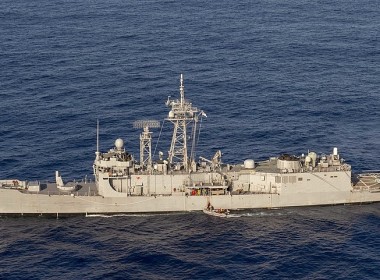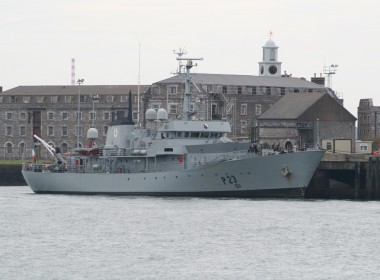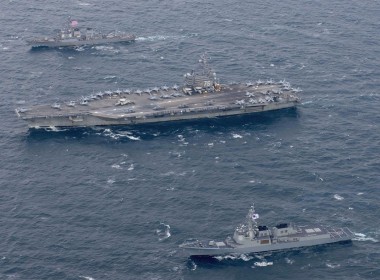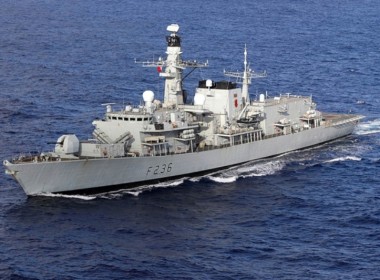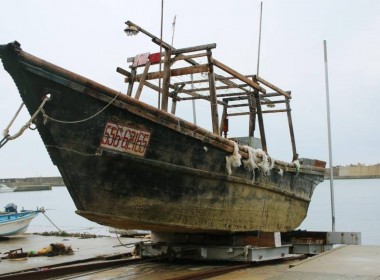North Korea nuclear crisis – maritime aspects
Carl Vinson, Lake Champlain and Michael Murphy
President Trump has ended years of relative US passivity over Asian security. He has served notice to Democratic People’s Republic of Korea (DPRK) President Kim Jong-un that he must halt his nuclear weapons programme, and that failure to do so will result in kinetic action being taken against his country.
On April 11 Trump announced that a US Navy “armada”, including, he hinted, nuclear powered submarines, was on its way to the waters off the Korean Peninsular to back up his threat. Naval analysts and commentators immediately identified the armada as being a Carrier Battle Group (CBG) consisting of the nuclear-powered aircraft carrier Carl Vinson and its escorts, namely the Arleigh Burke-class guided missile destroyers Michael Murphy and Wayne E Meyer, and the guided missile cruiser Lake Champlain.
US Navy sources subsequently asserted that another two guided missile destroyers, Sterett and Dewey were scheduled to join the CBG.
A week later, however, Washington confirmed that, at the time of Trump’s announcement, the CBG , having left Singapore on April 8, was preparing to carry out exercises with the Royal Australian Navy warships in the South China Sea, and was more than 4,000 kilometres from the Korean Peninsular.
The carrier and its escorts are now, though headed for the Korean Peninsular, and should be in position before the end of April. According to some reports, the CBG will shortly be joined by a number of Japan Maritime Self Defence Force warships. US Air Force EC-135 electronic intercept and Control Phoenix air sampling and analysis aircraft are reportedly already operating in the region.
The CBG certainly seems well equipped to strike, if required, at the DPRK’s Punggye-ri nuclear test site. The carrier’s air group includes three squadrons of Super Hornet fighter bombers, capable of delivering the latest guided bombs, and land attack missiles, as well as a squadron of Growler electronic warfare planes capable of jamming DPRK air defence radars and homing missiles.
The carrier’s escorts, furthermore, are all equipped with Tomahawk land attack missiles, as are the nuclear submarines probably integrated with the CBG.
The Trump regime has been castigated by much of the world’s media for apparently not knowing where its naval forces are, but it is highly likely that a bluff operation has been executed, and that it might have been successful, for the time bring at least. Recent aerial imagery tends to confirm that activity at Punggye-ri has been suspended.
These events have shown the strategic clout of heavily armed, highly mobile, CBGs, and have also underlined the value of the US Navy’s extensive but very low-profile Singapore base. Dubbed “Navy Region Centre Singapore”, the facility includes an alongside berth for a nuclear-powered aircraft carrier.
The coming weeks will likely see an extended show of force by American and Japanese warships off the Korean Peninsular, probably shadowed by some of the DPRK Navy’s reputedly fairly effective 70 -strong submarine force. Washington will doubtless be mindful of the fact that a DPRK sub succeeded in sinking a South Korean Navy corvette in 2010.
TREVOR HOLLINGSBEE


